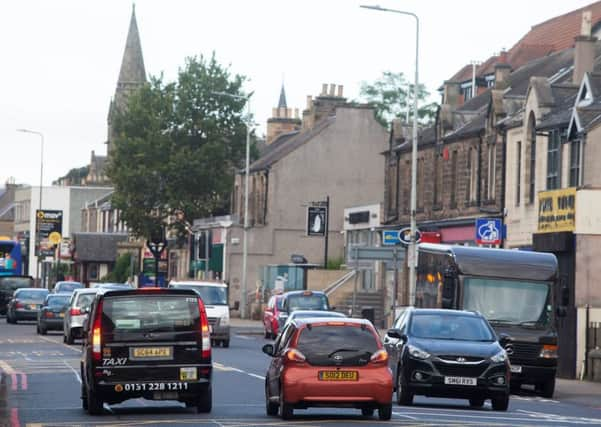Edinburgh congestion charge back on agenda to beat pollution


Dr Richard Dixon, director of Friends of the Earth Scotland, said if road tolls on vehicles coming into Edinburgh had been approved in the 2005 referendum it would have helped give the city cleaner air.
Edinburgh is already bidding to be the first city in Scotland to introduce a Low Emission Zone (LEZ) where lorries, vans and buses which fail to meet strict standards would have to pay a fee. But a congestion charge would be levied on all vehicles.
Advertisement
Hide AdAdvertisement
Hide AdThe Scottish Parliament’s environment committee has announced an inquiry into how to tackle poor air quality, noting that St John’s Road in Corstorphine and Hope Street, Glasgow, were named as Scotland’s most polluted streets and in breach of the European legal limit for nitrogen dioxide.
Dr Dixon said modelling by Transport Scotland projected a 27 per cent increase in traffic by 2035. “That’s 27 per cent more traffic coming from the west into Edinburgh and hitting St John’s Road. That cannot be allowed.”
He said an LEZ was more likely to be effective in the city centre than in Corstorphine, where figures suggested cars rather than lorries and buses were the biggest contributors to pollution.
He suggested more investment in walking, cycling, public transport and electric cars would help.
Advertisement
Hide AdAdvertisement
Hide AdAnd he argued the radical option of a congestion charge could soon be back on the agenda.
Residents voted 75-25 per cent against Edinburgh’s proposed £2-a-day charge which involved two cordons, one around the city centre and one just inside the city bypass.
Dr Dixon said: “That’s partly why we continue to have a pollution problem. If we had had a congestion charge in place, like London,. it would have reduced traffic, reduced emissions and saved people’s lives.
“If we cannot come up with a plan as good as congestion charge would have been, perhaps we should go back and look at it again.
Advertisement
Hide AdAdvertisement
Hide Ad“The mood is changing in Scotland – it’s an idea which will come back into discussion.
“No-one is seriously proposing it right now, but it’s ten years since the referendum, things have moved on, but congestion and air pollution are still a problem.
“There are good reasons to think about it again.”
Holyrood’s environment committee convener Graeme Dey said Scotland had made “great strides” towards having the cleanest air in Europe.
But he warned poor air quality was especially harmful for the young, elderly and people who already had heart and lung conditions.
Advertisement
Hide AdAdvertisement
Hide AdHesaid: “Recent evidence suggests air pollution may be a contributory factor to 15,000 early deaths in Scotland each year.
“As part of our new inquiry, the committee wants to hear whether Scotland is doing all that it can to tackle toxic gases and how this fits into the overall plans to cut pollution within the UK and EU.
“It’s crucial that we have the best policies in place so that we can breathe clean air and protect the health of our future generations.”
A city council spokeswoman said: “As a council we continue to prioritise the issue of poor air quality, with a range of projects focusing on a lower-emission fleet, reducing congestion and investment in cycling and walking initiatives.”
Advertisement
Hide AdAdvertisement
Hide AdShe continued: “Our latest data has shown an overall improvement in air quality across our Air Quality Management Areas (AQMAs), including St John’s Road, which has been rigorously monitored since being declared for traffic-related pollution.
“Further to this, we recently wrote to the Scottish Government to express our desire to introduce Scotland’s first LEZ in Edinburgh, with a view to accelerating our progress to delivering cleaner air for the Capital.”